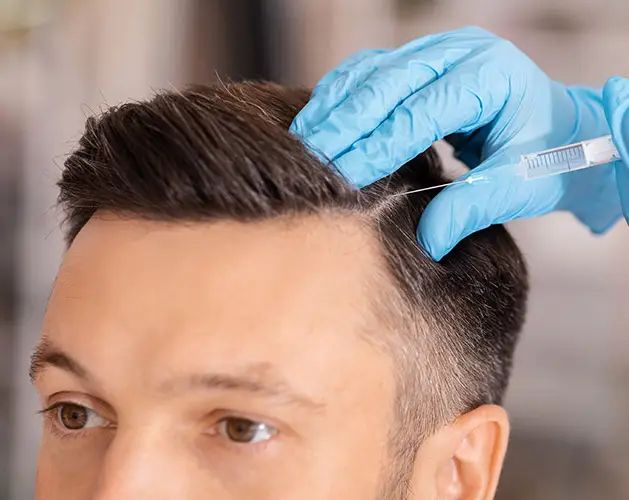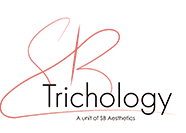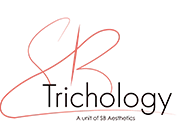Both procedures have their own merits in their own standing but as no procedure is perfect, both FUT and FUE have some finer points which need to be considered before a decision is made by you and your surgeon about the type of procedure most suitable to your needs.
Here are some factors which influence the choice of procedure.
1. FUT
Pros:
-
Offers a comparatively larger yield and is especially beneficial in cases of larger follicular requirement cases, which is often the primary objective of a hair transplant.
-
It is usually a shorter duration procedure if measured in terms of giving a higher follicle yield for the given time. Depending on the requirement, it is anywhere between 5 – 12 hours.
-
The procedure does not require extensive part preparation or shaving of the entire scalp and the donor scar is well hidden within the surrounding hair growth from the beginning.
-
It is usually a more cost-effective procedure
-
This can be followed by FUE if needed
Cons:
-
Carries an inherent surgical risk of infection, bleeding, and suture site gaping and needs meticulous technique by an expert surgeon for best results.
-
Has a relatively higher pain score and swelling post-procedure. Although medications prescribed do help in counteracting the former, but it does take some time for the patient to be completely comfortable.
-
The recovery period for the scar is longer than the FUE method and requires a follow-up visit for the removal of stitches depending on how the incision was closed.
-
Needs technical expertise on the part of the surgeon to camouflage the donor area adequately using the “trichophytic closure” technique.
-
A long curvilinear scar may need longer hair length to hide it adequately.
2. FUE
Pros:
- The donor area has a shorter recovery period of 1 week.
- There is negligible to very little visible scarring in the donor area and is suitable for people who wish to keep a shorter crop of hair.
- In case of poor scalp donor area density, the technique offers the advantage of extracting grafts from various body parts, like the beard.
- The recovery period has a minimum pain score and reduces the need for analgesics and antibiotics.
- There is no requirement for stitch removal.
Cons:
- The yield is comparatively less as compared to FUT as surrounding hair follicle units need to be spared to maintain density and avoid scarring alopecia post-procedure
- The procedure is more expertise-dependent to maximise the yield of units with viable hair roots and minimize the cutting base of hair while harvesting.
- The average procedure time is 8 – 10 hours and above due to individual follicle harvesting techniques.
- It usually has a higher cost per unit as compared to FUT.
- FUT cannot be planned after FUE.
- Needs shaving of the entire scalp for proper harvesting of follicular units.
The age of the patient, the extent of baldness, donor area density and expectations of the patient play a major role in deciding the type of procedure. In some cases where skin thickness is higher or hair roots are more fragile, FUT becomes a default choice. In some cases, a combination of both surgeries or sequential surgeries may be essential to achieve a complete result. These mega sessions are planned in case of large areas of alopecia which need more than 4000 grafts. Here it is essential to note that post one session of FUT, a second FUT or FUE can be easily planned but in cases where FUE has been done in the first session, only a second FUE can be planned along with harvesting from beard or other parts of body to preserve the health of donor area.
In both procedures, the donor site is something which has variable acceptability and in specific cases where donor site scarring is poor an additional camouflage procedure may be required. An upcoming technique called Scalp Micropigmentation can be used to improve the scar in case of prominent visibility. In Scalp Micropigmentation, a relatively novel method, tattooing with a specialized microneedle blade in a stippled manner is used to give an impression of hair follicles. This helps in further making the scar almost invisible within the adjacent hair. However, it must be kept in mind that this technique is not as commonly available everywhere and has its own limitations in terms of technical expertise, pigment failure, fading and the need for touch-up sessions.
In the end, no matter which procedure is preferred, it requires considerable technical expertise and training. It is not only about harvesting and processing the grafts but also about planning the angle of implants, density, hairline, parting preference and performing the procedure with utmost meticulousness to match the expectations of the patient. It needs an honest dialogue between the surgeon and the patient to set the expectations right and match the correct procedure and timeline for the most optimum outcome.
To know more about the most effective hair restoration treatment in Gurgaon, schedule an appointment with Dr. Shilpi Bhadani, SB Trichology unit of SB Aesthetics, Gurugram, call us on +918130134693 or Contact Us online.




